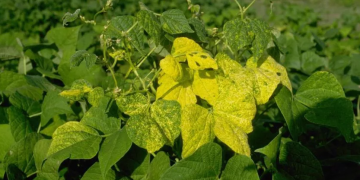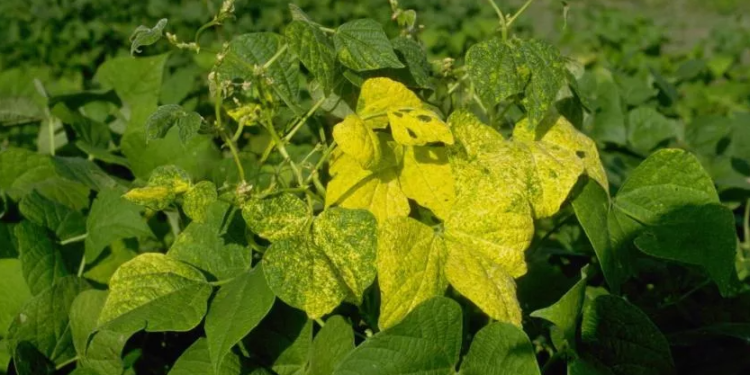#SavingBeans #BeanYellowMosaicVirus #CropFailure #ControlStrategies #Legumes #Aphids
Bean yellow mosaic virus (BYMV) is a plant virus that infects legumes, including beans, and can cause devastating damage to crops. The virus is spread by aphids, which feed on infected plants and transmit the virus to healthy plants. In this article, we will discuss the development of BYMV and its consequences for bean crops.
The development of BYMV begins with the introduction of the virus into a healthy bean plant. Once inside the plant, the virus replicates and spreads throughout the plant. Infected plants exhibit a range of symptoms, including yellowing and curling of leaves, stunted growth, and reduced yields. The virus can also cause the death of infected plants, leading to complete crop failure.
The consequences of BYMV for bean crops are significant. In addition to reducing yields and causing crop failure, the virus can also reduce the quality of the beans that are produced. Infected beans may be smaller and less nutritious than healthy beans, which can have implications for human health and nutrition.
To address the threat of BYMV, farmers and researchers have developed a variety of strategies for controlling the spread of the virus. These strategies include the use of insecticides to control aphids, the use of resistant bean varieties, and the implementation of crop rotation and other cultural practices.
The development of BYMV and its consequences for bean crops are significant. The spread of the virus can cause devastating damage to bean crops, leading to reduced yields and crop failure. However, through the use of effective control strategies, farmers and researchers can work to mitigate the threat of BYMV and ensure the continued production of healthy, high-quality beans.

































